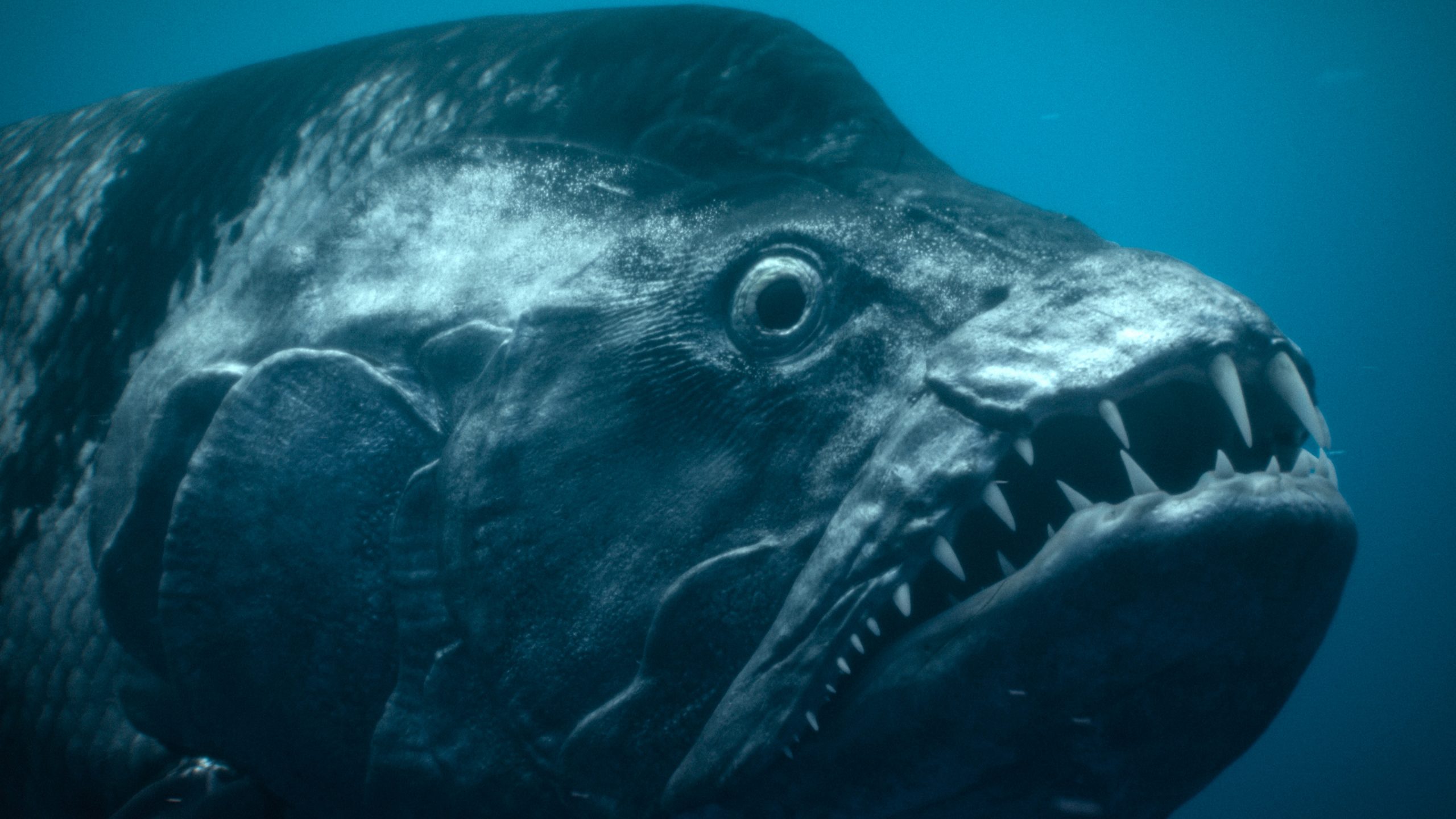Prehistoric Planet 2 explores the world’s largest biome in its fourth episode, “Oceans.”
The penultimate episode of the series begins with a return from Mosasaurus, which featured heavily in the first episode of the original Prehistoric Planet. Unlike dinosaurs, whose “terrible lizard” moniker isn’t accurate to their evolutionary history, mosasaurs actually are lizards. The name Mosasaurus means “Meuse lizard,” after the Meuse river which runs through the city of Maastricht (which itself lends its name to the final age of the Cretaceous period, when Prehistoric Planet 2 takes place).
Rather than focus on Mosasaurus itself, however, “Oceans” descends to a coral reef where Phosphorosaurus swims. There were two species of Phosphorosaurus, Phosphorosaurus ortliebi and Phosphorosaurus pontelegans. The second, described by Takuya Konishi et al, represented the first discovery of halisaurine mosasaur from the western Pacific, and also provided evidence that the animal had binocular vision, due to the orbits facing forward and a sloping snout. Sir David Attenborough’s narration draws more attention to its ability to see at night, but the model does reflect the anatomy very well, showing off another attribute that made Phosphorosaurus special.

“Oceans” then brings viewers to the Western Interior Seaway of ancient North America, where Hesperornis hunts shoals of fish. Hesperornis was initially described by paleontologist Othniel Charles Marsh in 1872, and as a bird, it’s one of two dinosaurs that appear in the episode.
Joining the Hesperornis is Xiphactinus, a large, predatory fish. There are still many different orders of fish alive today, but Xiphactinus was a member of a group called the ichthyodectiformes that went extinct at the end of Cretaceous. Fascinatingly, one study of Xiphactinus suggests the animal may have been endothermic (that is, warm-blooded), due to the energy demands of its predatory lifestyle.
Next, “Oceans” takes viewers to the coastline of Europe, where baby ammonites escape a slowly evaporating pool of water into the deep ocean. In my exploration, I wasn’t able to find support for this specific group pushing behavior in ammonites, but given their relationship to intelligent modern cephalopods, a survival-based group “push” doesn’t seem far-fetched.
Stragglers in the shallow pool are preyed upon by baby Pyroraptors. Pyroraptor olympius, described by Ronan Allain and Philippe Taquet in 2000, is a type of dromaeosaur, a relative of dinosaurs like Velociraptor. Its inclusion in Jurassic World: Dominion means more people are familiar with the animal, but its actual remains are quite fragmentary, making its classification within the dromaeosaur family a challenge, with some studies recovering it as a unenlagiine like Austroraptor from the “Swamps” episode, while others have placed it outside that group.

The next segment of “Oceans” features two creatures which debuted in the first episode of the original Prehistoric Planet: the elasmosaur Tuarangisaurus and Mosasaurus. The “Prehistoric Planet: Uncovered” segment at the end of this episode tackles their locomotive power, and reveals that the production crew behind the show has actually invested research into answering some of these questions. Additionally, the Prehistoric Planet Podcast revealed a lot of the climate modeling that was done to answer questions about the environments these animals existed in. If you’re enjoying the show and these articles, I highly recommend giving the podcast a listen.
“Oceans” then returns to the ammonites to show off their diversity. Baculites, Diplomoceras, and Nostoceras are among the genera highlighted. While ammonites might seem similar to the modern-day nautilus, they’re actually more closely related to shell-less cephalopods like octopus, squids, and cuttlefish.

“Oceans” ends in the frozen sea surrounding Antarctica, and introduces another elasmosaur, Morturneria seymourensis. Morturneria has been something of a taxonomic puzzle, as studies of its close relative Aristonectes suggest it was in fact the same animal, making the latter a junior synonym of the former. However, a 2017 study by F. Robin O’Keefe et al revealed differences in the dentition between Morturneria and its relatives, and showed that Morturneria had adaptations suited for filter feeding through substrate, making this elasmosaur one of the more bizarre inhabitants of the Mesozoic world.
AIPT Science is co-presented by AIPT and the New York City Skeptics.
Join the AIPT Patreon
Want to take our relationship to the next level? Become a patron today to gain access to exclusive perks, such as:
- ❌ Remove all ads on the website
- 💬 Join our Discord community, where we chat about the latest news and releases from everything we cover on AIPT
- 📗 Access to our monthly book club
- 📦 Get a physical trade paperback shipped to you every month
- 💥 And more!














You must be logged in to post a comment.